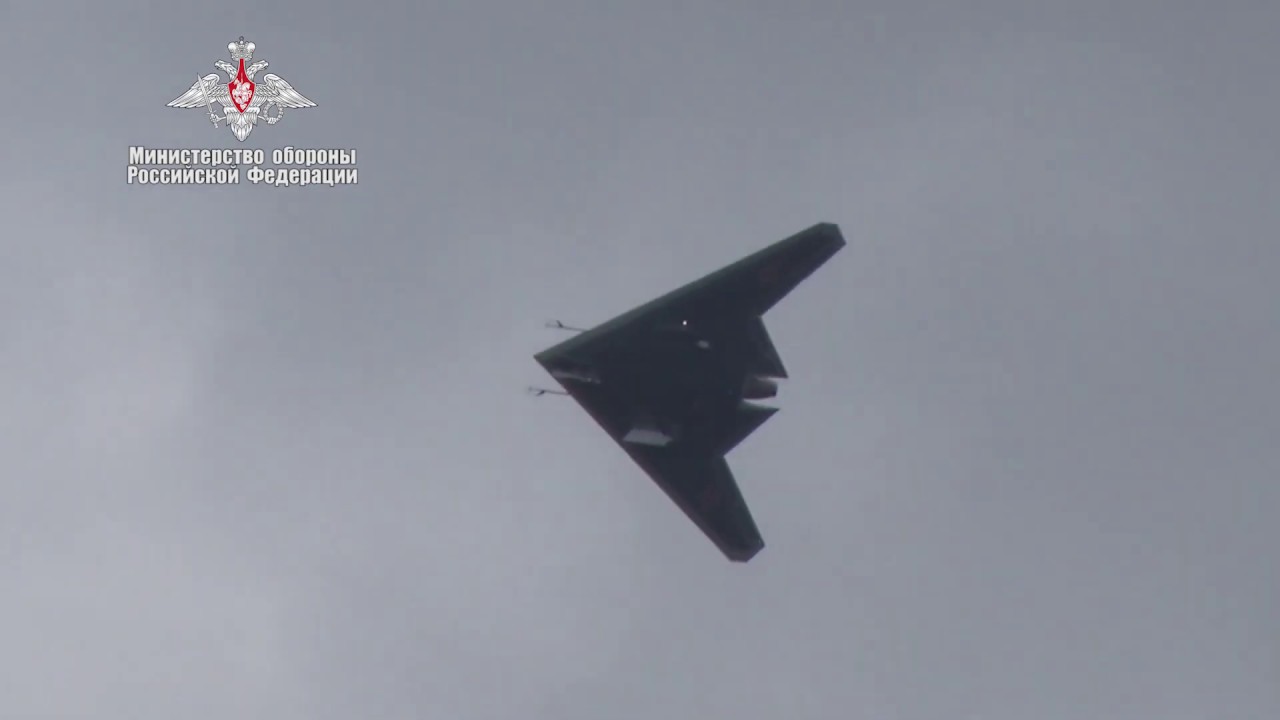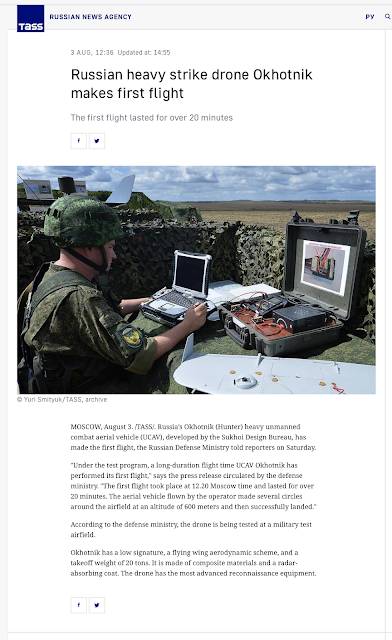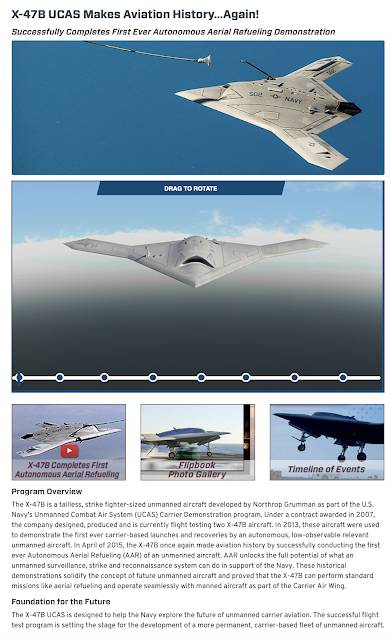
This article was last updated on April 16, 2022
Canada: ![]() Oye! Times readers Get FREE $30 to spend on Amazon, Walmart…
Oye! Times readers Get FREE $30 to spend on Amazon, Walmart…
USA: ![]() Oye! Times readers Get FREE $30 to spend on Amazon, Walmart…
Oye! Times readers Get FREE $30 to spend on Amazon, Walmart…
The Russian government recently released the first video showing one of its latest weapons, the Okhotnik-B (Hunter) heavy strike drone or Unmanned Combat Aerial Vehicle (UCAV). This weapon will have a significant impact on a battlefield since it is capable of delivering a significant number of both bombs and missiles.
Here is the report from TASS:
Here is a video showing the first flight test of the Okhotnik-B "flying wing":
The text accompanying the original shorter video states the following:
"Tests of the latest combat complex are carried out at one of the airfields of the Russian Ministry of Defense.
The first flight of the Hunter UAV lasted more than 20 minutes. The aircraft made several flights around the airfield at an altitude of about 600 m, after which it successfully landed.
The UAV "Hunter" created by the scheme is a flying wing using special materials and coatings that make it practically invisible to radar detection equipment.
The Hunter is equipped with target equipment for optoelectronic, radio engineering and other types of reconnaissance."
According to Global Security, the Okhotnik-B is being developed by the Sukhoi Design Bureau under contract to the Ministry of Defense of the Russian Federation. The mass of this sixth-generation unmanned aerial vehicle (UAV) is estimated to be roughly 20 tons and can fly at high subsonic speeds within a radius of 4000 kilometres (5000 kilometres according to Russian media reports) carrying a payload of up to two tons. It has a top speed of 1000 kilometres with an estimated wingspan of 17.6 metres (58 feet) and a fuselage length of 13.6 metres (45 feet). The Okhotnik's airframe is composed of composite materials with a radio-reflective coating to render it invisible to radar. The Okhotnik's arsenal consists of a range of air-to-surface missiles and both glide and operator-controlled bombs that will not be mounted on the UAV's wings, reducing the ability of enemy radar to detect the drone. Potential weapons included the OFZAB-500 high-fragmentation, high-explosive incendiary bomb and the ODAB-500 PMV fuel-air-explosive (thermobaric) bomb, both of which were used during the Russian campaign in Syria.
The Okhotnik-B is nearly fully autonomous thanks to its AI operating system. No pilot is used and the drone has the ability to make independent battle decisions with the exception of deploying weapons in battle; the Okhotnik-B still requires an operator to make the final decision regarding the use of weapons.
Experts suggest that the Okhotnik-B will be similar to the American drone X-47B currently being developed by Northrop Grumman as shown here:
The contract for the X-47B was awarded in 2007 and Northrop Grumman is currently flight testing two of the aircraft. In 2013, an X-47B launched from an aircraft carrier and in 2015, the X-47B conducted the first ever Autonomous Aerial Refuleing. Here is a video showing the X-47B taking off from the flight deck of an aircraft carrier in May 2013:
While the American military is in the process of developing a heavy drone and has been since 2007, it appears that the Russians are well ahead of the United States when it comes to commissioning this type of groundbreaking weapon for battlefield use.
Click HERE to read more from this author.
You can publish this article on your website as long as you provide a link back to this page.



Be the first to comment